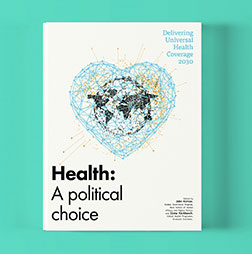Poor, sick and unconnected: The paradox of digital health
There are high expectations for the public health impact of digital health in low- and middle- income countries. It is often assumed that widespread and growing access to mobile phones will allow mobile health interventions (mHealth) to reach families across the globe.
Such enthusiasm should be tempered by an understanding of health equity principles. Hart’s 1971 ‘inverse care law’ stated that the availability of quality medical care is often inversely proportional to the population’s need for it. In 2000, I came up with a corollary to this law – the inverse equity hypothesis – proposing that new health interventions, particularly those resulting from technological innovations, will tend to be initially adopted by and benefit the most advantaged populations, thereby increasing health inequalities, at least in the short term.
Digitally disconnected, declining outcomes
My colleagues and I recently applied these principles to mHealth efforts aimed at reaching unvaccinated, or zero-dose, children. By analysing pooled data from recent national surveys in 70 LMICs, we found a clear link between a lack of immunisations and digital exclusion by documenting stark disparities in mobile phone ownership based on wealth, residence and gender. Just over half (56%) of the mothers studied had their own phone, although a phone was present in 87% of the households.
Only 32% of mothers in the poorest wealth quintile owned a phone, compared to 86% in the wealthiest quintile. Digital exclusion was most pronounced among families with zero-dose children: 66% of mothers of unvaccinated children could not be reached through their own phones, compared to 40% of the mothers of vaccinated children. Household phones were unavailable in 27% of zero-dose households, compared to only 11% of the remaining homes. Our simulation analyses suggest that – even with an unrealistic 100% effective mHealth intervention using mothers’ phones – zero-dose prevalence in the 70 countries would only be reduced from 13% to 10%, thus being unable to reach most unvaccinated children.
The challenge goes beyond simple ownership. A phone in the hand does not guarantee connectivity. Lack of reliable network access, failure to pay phone bills and frequent number changes are common issues, particularly among low-income families. Furthermore, language barriers, illiteracy and a lack of formal schooling may also limit the impact of mHealth interventions, as they are often designed for literate, technologically adept users.
There are only four published studies on how to reach zero-dose children with mHealth, all with inconclusive results. The literature focuses on trials where reminder messages are sent to phone-owning families already engaged with the health system, aiming to reduce drop-out rates. Reaching zero-dose children is far more complex, as their families have weak or non-existent links to health services.
In short, poverty, lack of immunisations and lack of connectivity are different elements of multiple deprivations. This creates a paradox: although mHealth is a promising tool, its effectiveness is inherently limited by the very social determinants that lead to a lack of access to services and poor health outcomes.
Towards a Truly Inclusive Digital Health Future
These insights highlight the need for evidence-based, multisectoral strategies. This requires moving past the broad assumption of widespread mobile access and instead conducting granular analyses to understand who is being left behind, and why. Equity considerations must be a core component of planning, not an afterthought.
Policymakers should focus not only on deploying technology but also on addressing the socio-economic factors that drive digital exclusion. This means supporting interventions outside the health sector, such as empowering women and removing economic barriers to phone ownership through social safety nets. For populations with low digital access, mHealth initiatives must be supplemented by traditional methods such as community outreach or mass media campaigns.
Community involvement is essential for understanding local barriers and finding effective solutions.
In most countries, the health sector is lagging behind other sectors of the economy in employing digital technologies. For instance, the banking, commerce and travel sectors have successfully used digital technologies for several years in almost all countries, and those sectors’ successful experiences will certainly help guide the implementation of mHealth. However, the equity dimensions of such initiatives have not been successfully explored, perhaps because they are not as important as they are for health, a field in which reaching the most vulnerable within a population is the main concern. Their success stories may be less relevant to health, as the populations most in need of health care (the poor and underserved) are often those with little money to spend, who consume little and who do not travel much.
In conclusion, we need a more nuanced and equitable approach to digital health. By using data to understand the social and political determinants of both health and digital access, policymakers can create innovations that truly serve the most vulnerable populations, rather than inadvertently widening existing inequalities. ▪












